Drinking water distribution systems [Download this white paper as PDF file]

A drinking water distribution system (DWDS) is a part of the water supply network that transport drinking water from a centralized treatment plant, or from wells, to consumers, for residential, commercial, industrial and fire prevention purposes. Distribution systems consist of pipes, pumps, valves, storage tanks, meters, fittings and other plumbing accessories.
The protection and maintenance of water distribution systems are essential to ensuring high-quality drinking water. Recent data on waterborne disease outbreaks suggest that distribution systems remain a source of contamination that has yet to be fully overcome. Particular attention is given to some factors, including backflow events through transverse connections, potential for contamination during construction, repair and maintenance activities.
Common problems in DWDS
Hazard in drinking water distribution systems can be of chemical, physical and microbial origin. Factors that influence water quality include pH, inorganic ions, dissolved oxygen and organic matter. The quality of drinking water is intimately intertwined with human well-being and health. Historically, the primary focus has been placed on the preservation of water sources and on the innovation of water treatment technologies, with the final link in the supply chain - the water distribution network - often overlooked.
Drinking water must traverse long distances from treatment facilities to end-users, engaging in complex physical, chemical, and biological reactions as it contacts the inner walls of the network and surfaces of attached equipment, resulting in changes to water quality. The mechanism of water quality deterioration within the network is complex, and it can lead to increase in turbidity, metal content, and bacterial load, including pathogens - a phenomenon commonly known as "secondary contamination".
The mechanism is a self-perpetuating vicious circle. First, corrosion of the internal surface of pipes creates ideal niches for microbial growth. A second point to consider is that corrosion products affect chemical reactions in water, through oxidative and catalytic effects, thus changing the composition and quality of water. The aqueous environment affects scale stability and microbial metabolism. Bacteria, in turn, release their metabolic products into the environment, which in turn has an impact on corrosion products and water quality.
Corrosion products and other chemical threats
Corrosion in the network is defined as the process in which metal ions are released into the water or form scale on pipe wall during oxidation of metal. Corrosion can be general or localized. Different pipe materials give different corrosion products when they corrode. In cast iron pipes, iron oxides are the main corrosion products. In copper pipes, copper oxides will instead form. In lead pipes, lead oxides will form. When a pipe corrodes, it releases substances that accumulate in drinking water, which inevitably loses quality. At the same time, the pipe thins and loses its mechanical resistance, reducing its lifespan. Furthermore, these substances that are released into the water could prove dangerous to human health, if they exceed a certain concentration. To make an example, chromium has negative effects at neurological and reproductive level, but its toxicity depends on its valence, with hexavalent chromium much more toxic than trivalent chromium. Stainless-steel pipes have some resistance to corrosion. However, under long-term operation, they become susceptible to pitting corrosion, which forms thin layers of corrosion scales. It has been reported that stainless-steel corrosion scales contain a large amount of chromium compounds.
The corrosion of the iron matrix and dissolution of divalent iron components are the main reasons for the increase in iron concentration in water. In waters with strong buffering capacity, Fe2+ first reacts with CO32- to form FeCO3, which is then slowly oxidized to form a robust protective layer on the iron base, thus inhibiting the corrosion of the iron matrix. Another factor that can influence iron corrosion is pH. Indeed, in the pH range of drinking water (6.0-9.0) iron corrosion products generally deposit in solid form on the internal surfaces of pipe walls or are discharged directly into the water in the form of ferrous iron. High concentrations of sulphate ions and chloride ions influence the conductivity of the water, and accelerate the corrosion and iron release processes. Dissolved oxygen plays a controversial role in iron corrosion processes, as it can have different functions depending on the conditions. Oxygen is the main electron acceptor in corrosion reactions, in fact it accelerates them. Furthermore, it can oxidize the Fe2+ generated by corrosion to ferric iron (Fe3+), thus inhibiting the release of iron. However, iron corrosion can still occur under anoxic conditions. Large organic molecules can reduce iron corrosion rates by accumulating and coating the internal surface of pipes over time. The combination of organic and inorganic matter also helps to form a stronger protective layer. However, organic matter can alter the redox potential of the reaction system, thus increasing its concentration of water-soluble ferrous iron.
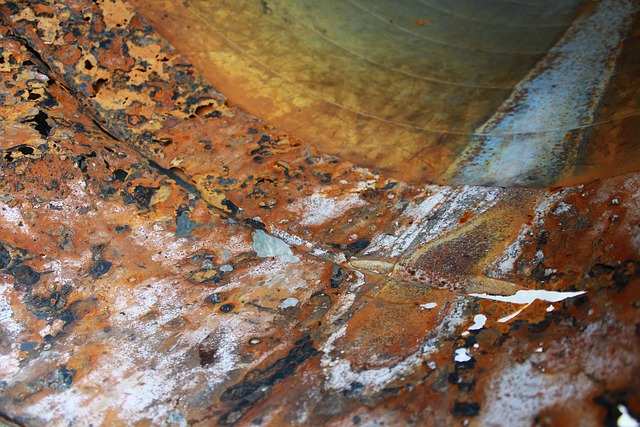
In this porous, anaerobic layer, sulfate-reducing bacteria exploit organic molecules and hydrogen as energy sources, reducing the sulfate to sulfide. Sulfide can reduce ferric oxide, releasing Fe2+ into the water. The formation process of the corrosion layer in the water network is still subject to further research. However, there are a small amount of other metal elements in cast iron pipes, such as manganese (Mn) and copper (Cu). These metal elements precipitate onto or are adsorbed onto the corrosion layer, forming other corrosion by-products, such as MnO2 and CuO, through a series of oxidation-reduction reactions. Iron pipes can be also a source of arsenic. Both arsenic and copper are heavy metals that pose serious health concerns, thus their concentrations must be monitored in DWDS.
Chemical hazards are also determined by disinfection by-products, leaching of piping materials and fittings, and water treatment chemicals. Disinfection by-products are organic and inorganic compounds resulting from chemical reactions between chemical biocides and organic and inorganic substances present in the water.
It must always be kept in mind that corrosive by-products from the piping network significantly affect the decay of disinfectants and the formation of disinfection by-products.
Several studies show how copper corrosion by-products (such as CuO, Cu2O and Cu2+) catalyze the accelerated decay of free chlorine. CuO and NiO in the piping network can promote the disproportionation reaction of hypobromous acid (HOBr), thus catalyzing the formation of BrO3-. Cu2+ can catalyze the conversion of monochloramine to dichloramine in water. As another example, the by-product of lead pipe corrosion (PbO2) can oxidize chloramine, thereby releasing Pb2+ into the water. To be noted that there is no safe concentration of lead in drinking water. For this reason, in recent years lead pipes have been gradually replaced worldwide. In the presence of Br-, the divalent manganese could be oxidized to MnO2 by the free chlorine, leading to the decay of the disinfectant. By-products of copper corrosion can lead to the formation of toxic trihalomethanes (THM). Cu2+ can increase the formation of halogenated acetic acids (HAA) and nitrosodimethylanilines (NDMA), both a huge threat to public health. The presence of CuO can simultaneously favor the formation of BrO3- and THM.
MnO2 can oxidize the I- in the water to HOI/I2, which then reacts with the organic matter in the water to form more toxic iodinated disinfection by-products.
PbO2 can also oxidize I- in the water body to HOI/I2, subsequently transforming into iodoform (CHI3). Trichloronitromethane (TCNM) in the Fe2+/FeOOH and Fe2+/Fe3O4 systems is degraded through reduction. Trichloroacetonitrile (TCAN), 1,1,1-trichloropropanone (1,1,1-TCP), and trichloroacetaldide (TCAh) are degraded through hydrolysis and reduction. Finally, trichloromethane (TCM) and trichloroacetic acid (TCAA) cannot be degraded.
Microbiological hazard
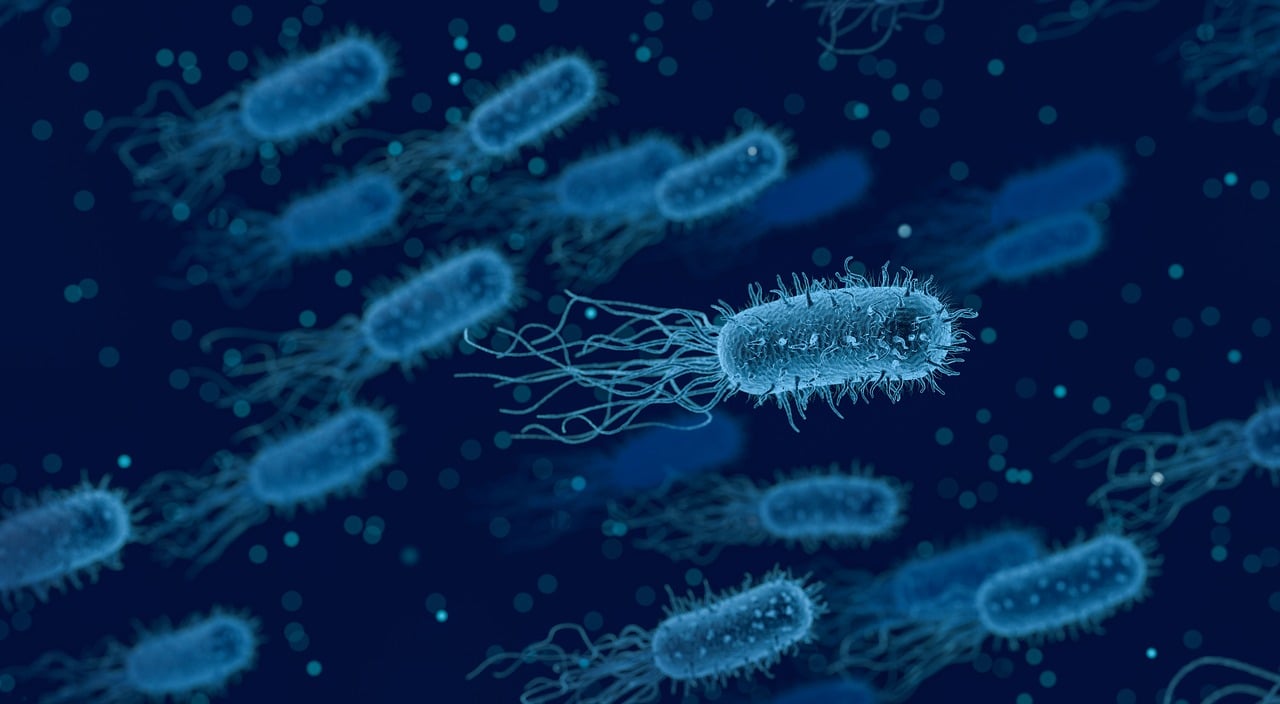
The microbiological quality of DWDS water is of primary importance to human health. Drinking water with a low variation in bacterial communities between the point of production and the tap can be considered biologically stable. Therefore, the abundance and composition of microbial communities, along the drinking water network, are key parameters to enable accurate monitoring of the microbiological composition of drinking water over time and space. Problems occurring in a drinking water treatment plant can lead to the proliferation of opportunistic pathogens such as Mycobacterium spp., Pseudomonas aeruginosa, and Legionella pneumophila, among others. In particular, DWDSs have been identified as one of the largest reservoirs of Legionella. From this source, it can spread though cooling towers, fountains and other systems that spray or nebulize water.
The settlement and proliferation of bacteria on internal surfaces of pipes leads to a phenomenon commonly known as "biofilm". This bacterial layer commonly leads to technical complications during distribution, such as scaling in pipes, biocorrosion and degradation of water quality.
Biofilm-related issues in DWDS
A mature biofilm is predominantly constituted of bacteria, fungi, protozoa, and invertebrates. In particular, the presence of amoebae provides an ideal habitat for the proliferation of pathogens.
In water distribution systems, biofilm can be responsible for a wide range of water quality and operational problems, such as loss of disinfectant residuals, increase in bacterial abundance, reduction of dissolved oxygen, change in taste and odor, microbial-influenced corrosion, and hydraulic roughness.
Biofilm influences the corrosion of pipe materials through metabolic actions in four distinct ways:
(1) affecting the anodic or cathodic reactions of corrosion;
(2) causing pitting on metal surface;
(3) due to the corrosive effect of some acid metabolites;
(4) causing local anaerobic conditions, thus promoting anaerobic corrosion.
Microbes primarily associated with biocorrosion of iron pipes include iron-oxidizing or reducing bacteria, and sulfate-oxidizing or reducing bacteria.
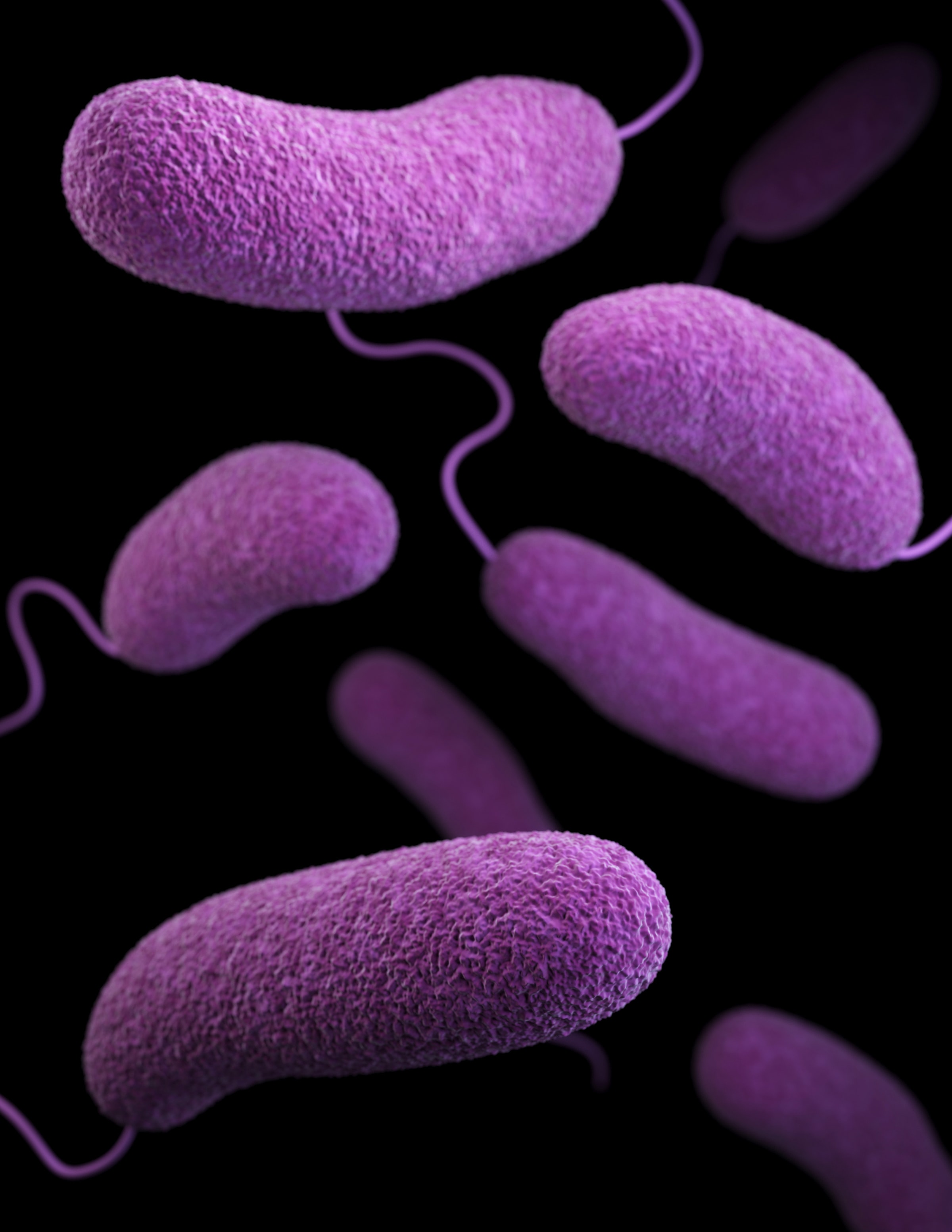
Biofilms allow microorganisms to persist and grow in hostile environments under low nutrient conditions. In this protected environment, extracellular polymeric substances (EPS) provide a barrier against disinfectants and other deleterious chemicals, predatory microorganisms and antibiotics. Biofilms are the main microbial incubator in both new and old pipelines. Indeed, only 10% of total bacteria live free in the liquid, in planktonic form. Some pathogens, such as Mycobacterium avium, Legionella pneumophila, Escherichia coli and Nitrosomonas spp. can survive for a long time in biofilm shelter, and enter the water following biofilm shedding. Bacteria belonging to the genus Nitrosomonas contributes to the generation of toxic nitrites.
A number of extrinsic factors can influence biofilm formation, in particular hydraulic conditions, pipe age and material, pH and temperature of water, its chemical composition, seasonal changes and many others. Generally, biofilm and particles tend to accumulate at the bottom of the pipe, and in areas of low flow. The downstream portion of the piping tends to be richer in biofilm than the upstream portions, even where the pipes are newer.
The safety of drinking water cannot be guaranteed without effective strategies for biofilm monitoring and control. ALVIM Technology provides outstanding solutions for detection and monitoring of biofilm, on line and in real time. An application case related to biofilm detection in water distribution networks is available here.
Disinfection methods
Drinking water is one of the most carefully monitored and regulated resources. To produce potable water, water utilities select the most appropriate treatments based on the characteristics of the raw water used by the system. These processes normally include a sequential treatment that employs procedures such as filtration and disinfection.
Primary disinfection kills or inactivates pathogenic microorganisms that may be present in the source water before the water is delivered to the distribution network. To preserve the quality of already treated water intended for distribution, limiting any uncontrolled growth, a secondary disinfection is applied. This is commonly based on the dosage of a chemical biocide, most commonly chlorine or chloramines. The population of microbes that survive the first treatment could thus be controlled, and the microbes residing in the biofilm are constantly exposed to biocide residual.
The purpose of the granulated active carbon (GAC) filter is to eliminate any potential microbial contamination from primary disinfectant treated water. However, due to the high concentration of bacteria blocked by these filters, it is well known that, as a double-edged sword, bacteria proliferate and form biofilm right inside the granules and filters, causing biofouling problems. Additionally, several studies suggest that biofilm on GAC filters may serve as hotspot for protozoa, including amoebae and pathogens. Indeed, biofilms create microbial communities where protozoa find protection against disinfectants and food, grazing bacteria.
There are two issues to consider regarding the presence of protozoa in drinking water. Protozoa could form oocysts that are highly resistant to chlorine disinfection - which is the main strategy currently applied to drinking water. To give an example, 90% inactivation of Cryptosporidium oocysts can require up to 90 minutes exposure to 80 mg/L of free chlorine. Other dangerous amoebae include Acanthamoeba castellanii, Hartmannella vermiformis, and Naegleria fowleri, commonly sensationalized as the "brain-eating amoeba". Most alarmingly, even water sampled from chlorinated pools - typically disinfected with a high concentration of chlorine - tested positive for H. vermiformis. In addition to being pathogenic themselves, amoeba-resistant bacteria (ARB) able to evade phagocytosis and reside continuously within host protozoa have been reported. Among these, there are Legionella pneumophila, Mycobacterium avium and Pseudomonas aeruginosa. Inside amoebae, ARB are more protected from disinfection and they can even increase their virulence.
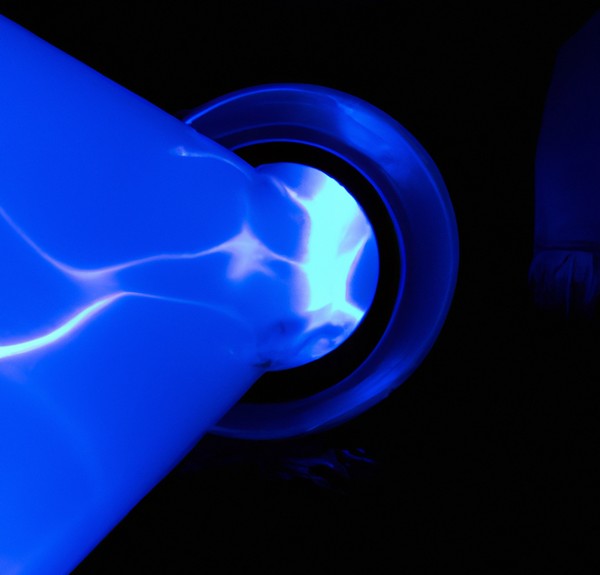
Over the last few years, ultraviolet (UV) disinfection has been increasingly considered as a possible option for primary disinfection. The main advantage of UV is the absence of chlorine by-products, a major concern in drinking water. On the other hand, UV is effective only in the point where it is applied - so it can be an option for treating the water, but not for killing biofilm in the piping system. In turn, biofilm can play an active role in preventing UV damage to bacterial cells, thanks to its sheltering effect. However, studies conducted in Swedish aqueducts suggest that the change from chlorine to UV disinfection does not lead to a significant change in biofilm, although it has been hypothesized that the addition of monochloramine as a secondary disinfectant may have influenced this observation.
When it comes to secondary disinfection, particular attention shall be paid to keeping an adequate concentration of disinfectant at the end of the network. When using free chlorine, safety standards usually suggest that the final concentration should not fall below 0.5 mg/L. Nevertheless, as discussed in another white paper, chlorine residual is not enough for guaranteeing an effective sanitation. Moreover, the formation of by-products within the network deserves special attention. Metabolites of microbial life within biofilms, secreted extracellular polymeric substances, and the organisms themselves increase the organic content of water. Such organic material may react with residual chlorine to form disinfection by-products (DBPs), resulting in increased toxicity. To give an example, the reaction of P. aeruginosa with residual chlorine generates trihalomethanes, through chemical reactions. These by-products have carcinogenic, mutagenic and teratogenic effect. In this case, the choice of a different disinfectant becomes a key strategy to avoid the formation of dangerous DBPs within the distribution system.
For such reason, chloramines are sometimes applied as secondary disinfectant. For monochloramine, safety standards usually suggest a final concentration not lower than 2 mg/L. It is well known that chloramines penetrate biofilm better than chlorine. To give an example, monochloramine can penetrate a nitrifying biofilm up to 170 times faster than chlorine. It shall be considered that chlorine is by its nature highly oxidizing, and it reacts easily with macromolecules in the EPS, such as carbohydrates and proteins. So, its lower penetration may be the result of rapid reaction with biofilm components, rather than diffusion limitation within biofilm. However, it should be taken into consideration that penetration does not correspond to loss of cell viability - and some studies suggest that chlorine is more effective than chloramine, when it reaches the target.
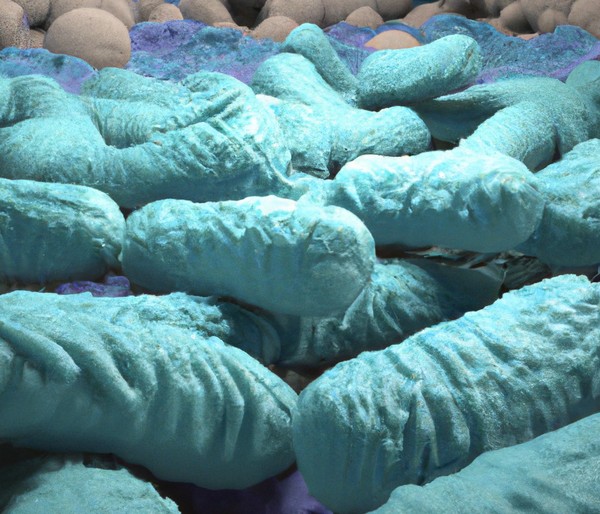
The advantages of using chloramine could be counteracted by some disadvantages. Chloramines are produced in situ, from the reaction between free chlorine and ammonia. The presence of free ammonia represents a major selective advantage for Nitrosomonas bacteria which feed on ammonia to produce nitrites, causing nitrification problems and decay of chloramines. Nitrification is a two-step microbiological process in which ammonia is first oxidized to nitrite by ammonia-oxidizing bacteria and subsequently nitrite is oxidized to nitrate by bacteria. Recent studies have reported that in addition to pH and nitrites, soluble microbial products significantly accelerate the decay of chloramines by catalyzing the self-decomposition and oxidation processes of nitrites in chlorinated waters.
Whatever the treatment, it shall be always considered that killing microorganisms is not equivalent to cleaning. Without removal of the sticky EPS, the biofilm matrix can still be present even after killing the microorganisms that formed it, and dead cell residuals can feed the microbes that survived disinfection. Thus, even with a minimum amount of nutrients in water, biofilm can persist in pipes.
In biofilms of different age, the applied disinfection method can lead to the development of a different bacterial communities. Monitoring changes in the microbial community in DWDS is important to further understand the mechanisms of microbial selection and regrowth.
Conclusions
The quality of drinking water is closely related to the life and health of people. With the economic development and the improvement of living standards, the population's demand for drinking water also increases. Providing safe, clean and healthy drinking water for people is of outermost strategic importance. At present, many countries are making major efforts to promote the construction of high-quality municipal drinking water facilities.
During transportation, water quality indices such as turbidity, color, total number of bacteria and heavy metal content may change, due to chemical and biochemical reactions with pipes, equipment, microorganisms, organic and inorganic matter. Preventing the deterioration of drinking water in the pipe network and safely transporting it to end users is still a problem.
In some Countries, the idea that it is not possible to get rid of biofilm from water distribution networks is more and more accepted. Therefore, some water utilities just aim at keeping bacterial proliferation below a given threshold. However, this idea does not seem to be supported by scientific evidences, since biofilm is the ideal environment for the survival and proliferation of pathogens, and it is not possible to predict the exact composition of the bacterial species that make up biofilm.
As discussed, the presence of biofilm in drinking water distribution pipes becomes part of a self-sustaining vicious circle, as it facilitates corrosion of the internal surface of the pipes and it plays a role in the formation of DBP. Preventing the growth and reappearance of biofilm is essential for maintaining water quality, consumers health and safety, and ultimately slowing down pipe corrosion. Thanks to the ALVIM Technology, it is possible to know in real time when biofilm starts to form, to check the effectiveness of disinfectants, and to optimize the dosage, with a huge economic advantage. At the same time, this allows to limit the formation of DBPs.
|
Do you have biofilm-related issues?
|





